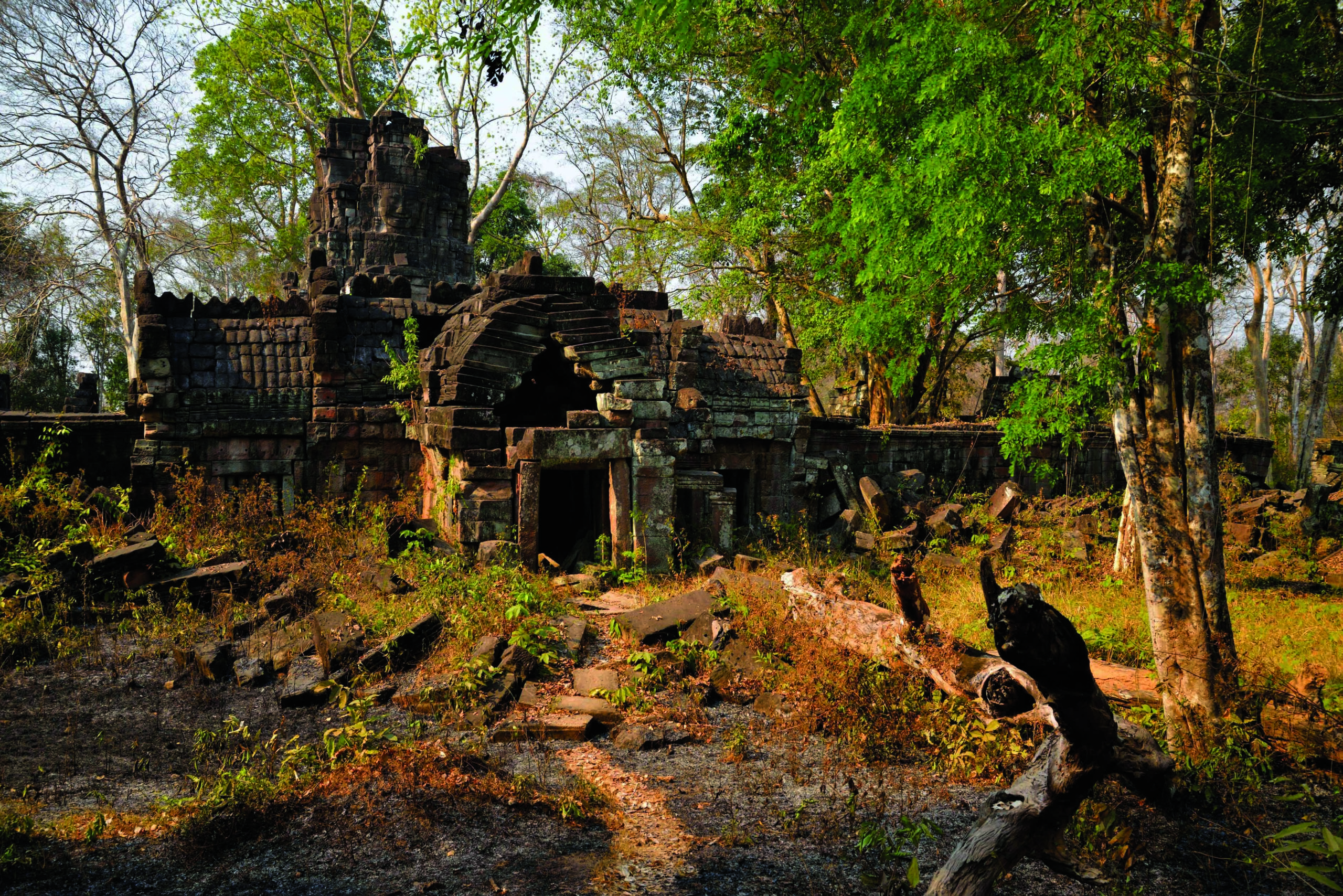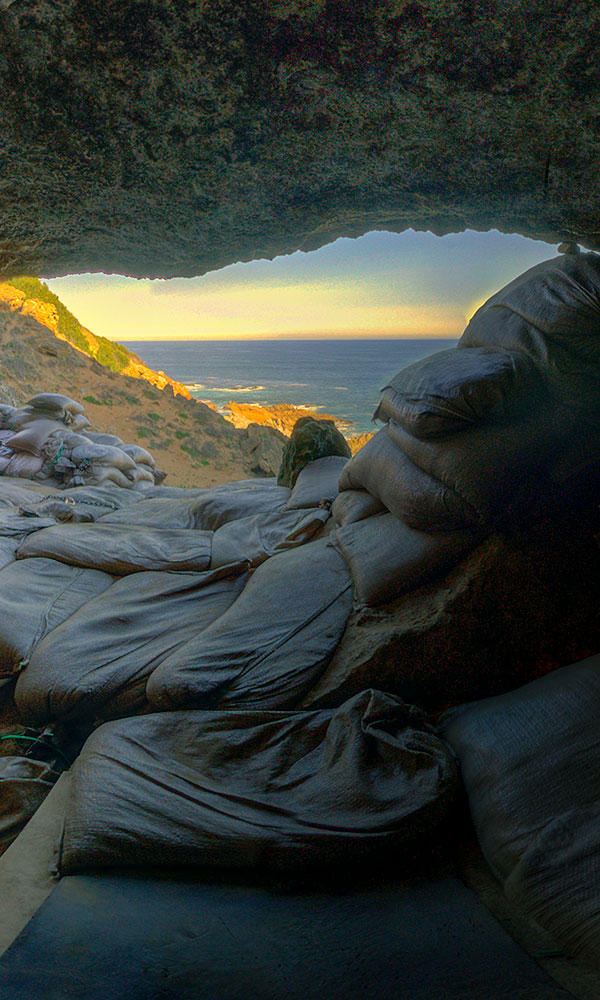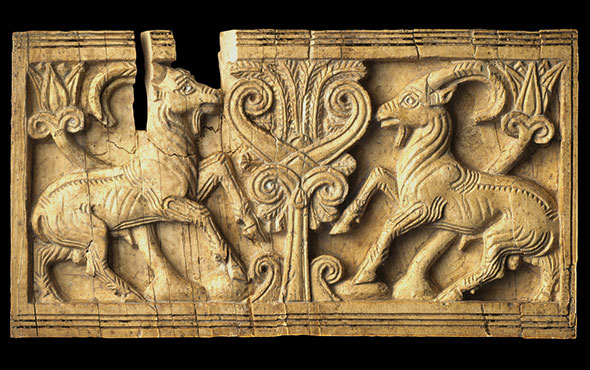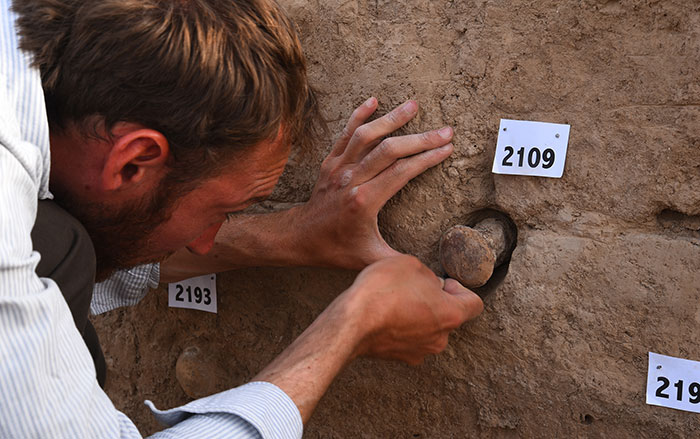
SYDNEY, AUSTRALIA—According to a Science News report, analysis of sediments from the moat surrounding Cambodia’s Angkor Thom suggests its ruing elites gradually abandoned the medieval walled city, beginning in the early fourteenth century. It had been previously thought that the hundreds of thousands of residents who lived in the Greater Angkor region left suddenly in the mid-fifteenth century, perhaps due to a military defeat or catastrophic damage to the extensive water infrastructure system brought on by climate change. Geoscientist Dan Penny of the University of Sydney and his colleagues found that evidence of burning, forest disturbances, and soil erosion in the form of traces of plants, pollen, and minerals in the sediment cores decreased throughout the fourteenth century. At the same time, pollen from floating vegetation in the moat increased, indicating that the moat was not being maintained as it once had been. The rest of the city’s extensive water system may have also failed for lack of repairs, Penny said. He thinks the elites may have moved closer to the coastline to pursue profits in the sea trade, leaving the city vulnerable to decline and open to invasion. To read in-depth about archaeology in Cambodia, go to “Letter From Cambodia: Storied Landscape.”










